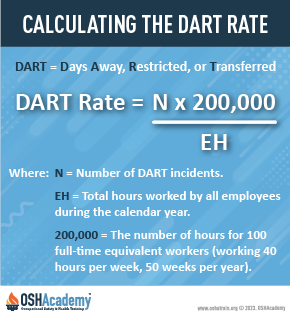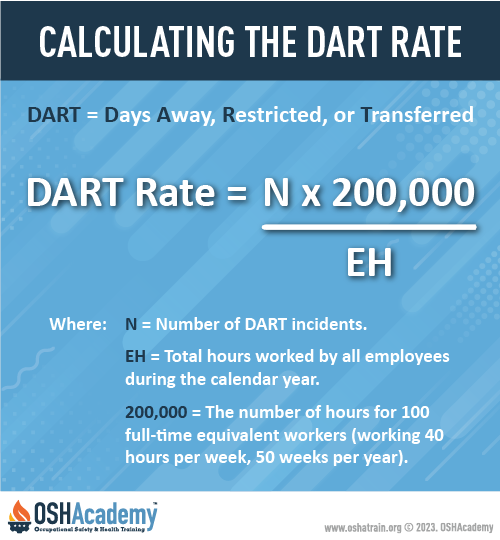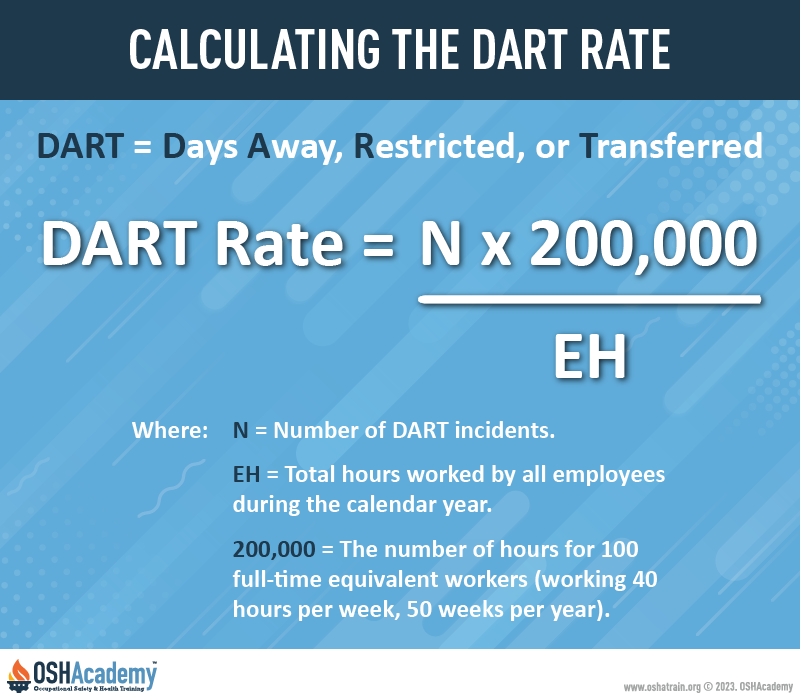DART Rate
The "DART" (Days Away, Restricted, or Job Transferred) is incident rate used in all industries. The DART Rate is the number of injury and illness cases that resulted in employee days away from work or job transfer or restrictions (cases on the OSHA 300 log with either column H or I checked) multiplied by 200,000 divided by total hours worked by all employees during the year. You can compute the DART using the following equation:



On construction sites, the total number of hours worked will include your own employees, temporary employees, contractor employees directly supervised by you, and all contractor/subcontractor employees. The 200,000 figure in the formula represents the number of hours 100 employees working 40 hours per week, 50 weeks per year would work and provides the standard base for calculating incidence rates.
For example, if an employer reported 10 work-related injuries and illnesses in 2021 that resulted in days away, restricted, or transfer, and all employees worked 1,000,000 hours that year, then the 2021 DART Rate for that employer would be (10 x 200,000) / 1,000,000 = 2.
Knowledge Check Choose the best answer for the question.
2-6.Calculate the DART rate for a company that recorded 7 work-related cases and a total of 100,000 hours worked by employees during the year.
DART=((N x 200,000) / EH)
You forgot to answer the question!
